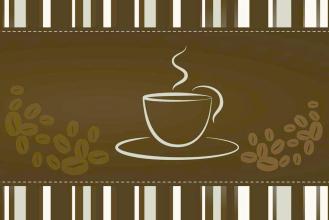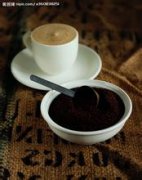Arabica Coffee Variety Variety Quality Flavor Description Processing Method Taste Grindness Introduction

Arabica is a large shrub with oval, dark green leaves and oval fruit. There are generally two slightly flattened beans with small and round beans, long oval on the front, narrow and S-shaped cracks in the middle, and smooth arcs on the back of the beans. The caffeine content is about 1% Muay 1.7% Arabica coffee tree, one of the most important coffee trees in the world. The origin of Arabica species (scientific name Coffee Arabica) is the Abyssinia Plateau of Ethiopia (now the Ethiopian Plateau). In the early days, it was mainly used as medicine to eat. In the 13th century, it developed the habit of baking and drinking. It was introduced into Europe through the Arab world in the 16th century, and further became a favorite drink all over the world.
Iron pickup
"Typica" iron pickup, the name sounds majestic, but in fact it is not so strong. It has weak physique, poor disease resistance, easy to catch rust leaf disease and less fruit yield. It is one of the oldest native varieties in Ethiopia, and many Arabica are derived from iron pickups!
The parietal leaf of the iron pickup is bronzed, and the bean grain is large, pointed, oval or thin. Everyone is familiar with the well-known Mantenin, Blue Mountain, Elephant Bean, Kona, Yunnan Dou …... Wait. They are all derived from iron pickups. (how bad it is)
Bourbon
"Bourbon" bourbon is an ancient and excellent variety juxtaposed with iron pickup, and some botanists believe that bourbon is an early variety of iron pickup after it was transplanted to Yemen.
Bourbon is almost all round beans, beans are a little smaller than tin card, ripening later, but the yield is 30% more than tin card. It is suitable for growing above 1200 meters above sea level, and its flavor is obviously more prominent than those below 1000 meters, but bourbon has a disadvantage that it will rest for a year as a result. Round bourbon is full of vitality, and its resistance to rust leaf disease is better than that of iron pickup, but its flavor is as good as it, or even better.
In 1810, some of the round beans in Bourbon Island mutated into pointed beans, which is known as the "pointed bourbon". It is characterized by a caffeine content of only half, low output, weak physique, and extremely rare, just like a weak aristocratic teenager.
In addition, the biggest thing that iron pickup and bourbon have in common is that they both need the protection of shade trees. if there is no shade tree to help it block the sun, it is not only not conducive to its growth, but also greatly reduces the flavor of coffee beans.
Arabica coffee trees grow between 900m and 2000 m above sea level; they are cold-resistant, and the suitable growth temperature is 15ml / 24m; they need more humidity, and the annual rainfall is not less than 1500 ml. At the same time, they also require higher cultivation techniques and conditions.
Arabica coffee beans are mainly grown in South America (except Argentina and parts of Brazil), Central American countries, Africa (Kenya, Ethiopia, etc., mainly East Africa), Asia (including parts of Yemen, India and Papua New Guinea), Yunnan, Hainan and Taiwan in China also grow a small amount of Arabica coffee beans in the world. Arabica coffee accounts for about 65%, 80%, and its excellent flavor and aroma make it the only coffee of these native species that can be drunk directly and alone. However, its resistance to drying, frost, diseases and insect pests is low, especially to the biggest natural enemy of coffee-leaf rust, so all producing countries are committed to improving varieties. For example, Sri Lanka, as we all know, used to be one of the most famous coffee producers in the past, but coffee farms were not spared by leaf rust at the end of the 19th century. Since then, Sri Lanka has turned to black tea, which is also the kingdom of black tea in India.
Important Notice :
前街咖啡 FrontStreet Coffee has moved to new addredd:
FrontStreet Coffee Address: 315,Donghua East Road,GuangZhou
Tel:020 38364473
- Prev

Arabica Coffee Flavor description Grinding characteristics simple planting situation of Fine Coffee in Variety producing area
Robusta coffee beans have a unique aroma and bitter taste, and the content of caffeine is much higher than that of Arabica. To make a cup of pure espresso, you need to mix a certain proportion of high-quality robusta beans on the basis of Arabica beans. Because among the many choices of coffee beans, high-quality robusta coffee beans can make Italian coffee show its due personality and increase coffee.
- Next

Columbia Huilan Coffee Flavor description Grinding Variety characteristics of producing area Baking degree handmade course simple
Next, I would like to share with you the process of brewing Huilan. Beans are Huilan with deep roasting degree in Brother Bird, and the apparatus is Harrio V01. I chose the ratio of powder to water at 1:12 (that is, 25g coffee powder to extract 300ml coffee liquid). It seems random, but in fact, it is based on the baking degree of beans and the release of good substances in coffee powder. Choose priority extraction.
Related
- Detailed explanation of Jadeite planting Land in Panamanian Jadeite Manor introduction to the grading system of Jadeite competitive bidding, Red bid, Green bid and Rose Summer
- Story of Coffee planting in Brenka region of Costa Rica Stonehenge Manor anaerobic heavy honey treatment of flavor mouth
- What's on the barrel of Blue Mountain Coffee beans?
- Can American coffee also pull flowers? How to use hot American style to pull out a good-looking pattern?
- Can you make a cold extract with coffee beans? What is the right proportion for cold-extracted coffee formula?
- Indonesian PWN Gold Mandrine Coffee Origin Features Flavor How to Chong? Mandolin coffee is American.
- A brief introduction to the flavor characteristics of Brazilian yellow bourbon coffee beans
- What is the effect of different water quality on the flavor of cold-extracted coffee? What kind of water is best for brewing coffee?
- Why do you think of Rose Summer whenever you mention Panamanian coffee?
- Introduction to the characteristics of authentic blue mountain coffee bean producing areas? What is the CIB Coffee Authority in Jamaica?

